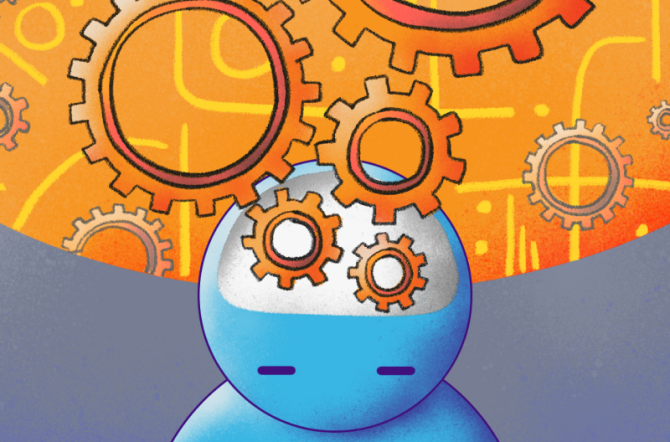Unlike the videos created for students or the general public, educational videos on mental health for scientific explanations are more complicated. These videos aim to shed some light on the issues of how — chemically and physiologically — people’s minds and bodies react to certain conditions. Thus, being too wordy or complex can turn the viewers away.
So how can we deal with this problem? Once again, the animation is our answer. Simulations of the body parts or depictions of chemical reactions, animation can explain both well. Moreover, with visuals, music, or voice-over combined, scientific explanations are much more interesting. Let’s take a look at some examples.
You could read the previous parts at:
8 best examples of mental health educational videos for students
8 best examples of mental health educational videos for raising public awareness
How stress affects your brain
While they only use a 2D art style for their animation, TedEd videos hardly ever fail to impress. Following the simple style of informative videos, where the animation acts as the visualization of the voiceover script, TedEd videos manage to present useful information in the most elegant ways, as demonstrated in this video here.
Aimed mainly as casual adult learners, this mental health educational video maintains a fine balance between wowing audiences with its visuals and remaining professional and accurate. A lot of the knowledge transmitted is on the functioning of the brain, so the animation has to be accurate. Animation allows for that, delving into areas in the brain that you can’t demonstrate with actual photos or even still illustrations.
Why Are You Anxious?
Whiteboard animation doesn’t have to literally be done on a whiteboard, although AsapScience’s videos, on such this one about anxiety, often are done using markers of every color on an actual board. Drawing on this kind of board requires some getting used to, since everything can be easily erased, and movements are limited to stop motion. However, when done right, it can be very fun to look at while still being relatable.
AsapScience uses a lot of props to make this happen, like sticky notes and buttons, which is what makes the animation seem relatable as if you yourself could have made it with some friends. That already makes you want to stay and see what another DIY trick the content creator has up his sleeve.
But that’s not the only reason for this science animation video to succeed. Whiteboard animation also makes it necessary for the diagrams and shapes to not be too complicated. In other words, simply by choosing whiteboard animation, you find yourself simplifying your knowledge, which makes it easier for learners to take it all in.
What is dementia?
You may have noticed the trend in science animation videos — animation tends to be a visualization of whatever is being said, rather like the style of a classroom presentation. This video from the Alzheimer’s Research center is not an exception.
This video briefly discusses what dementia is, how it occurs within the body, how many different ways it can occur, and what other conditions can it be mistaken for. These helpful points are made more memorable thanks to the unconventionally colorful images, with modern vector designs and pleasing texts — in the few moments when there were texts — that makes watching the video very easy.
This kind of mental health educational video works best in tandem with other resources, like bullet point notes or diagrams that would dive deeper into the topic. The science animation’s key job is to pique the viewers’ interests about the topic enough for them to want to find out more, which is why it’s so succinct and bright.
Bipolar disorder
To educate general viewers about bipolar disorder, a commonly misunderstood condition, the medical and mental health education platform Osmosis has created this video to clear things up.
This video uses a very simple form of animation: whiteboard animation. This animation draws itself onto the screen — or the “whiteboard” — just as the viewer watching it, emulating the experiences of a classroom. But of course, it’s nothing like a classroom: there are more colors and lively shapes that make the presentation far more interesting than letters on a whiteboard. It also has a faster pace than classroom teaching — all the most important information is chosen and presented in a short amount of time. This is to fit the viewer’s attention span.
With a highly informative script like this, what’s important is to make sure that the textual elements of the animation are not overcrowding other aspects of it. As you can see here, all the information is presented only as bullet points and not as paragraphs.
Eating and Body Dysmorphic Disorders
Ted-Ed needs no introduction when it comes to educational video content online, and not least for animation content. In fact, it’s probably the perfect example of how you can use different kinds of animation throughout a lesson and reap the fullest benefit of this amazing tool.
Take a look at this video on eating disorders — it opens with an anecdotal segment telling a story in shimmering colors to get the viewers interested. As you keep watching, animated texts and small instances like body dysmorphia when looking in a mirror pops up to act as an aid to the instructor’s descriptions. And then there are also demonstrative animations which present the many glands in the brain and how happenings in one of them can influence the way a person views herself and others.
In just one video, three different methods of using animation have popped up, and all of them serve their purposes to bring about a lesson that is stimulating, informative, and entertaining to watch. This is a great example of what more serious mental health educational videos should be like.
The Psychology of Post-traumatic Stress Disorder
If you feel like you’re going back into memory — yours or anyone else’s — when watching this animation, it’s because the animator wanted you to feel like that. Despite this being a highly informative video with information on how hormones react in the brain and body, the design itself looks like an old movie, setting the tone for a video explaining how traumatic experiences and memories can affect a person months or even years after they went through it.
Different from the typical TedEd style, with lively, clean-cut animation that demonstrates the examples and knowledge orally presented by the voiceover, this video’s impeccable design makes it stand out. It gives a glimpse into PTSD to those who haven’t undergone it in a creative and engaging way. The voice artist’s fluctuations in tone, heightening as the video reaches dramatic parts that show the intensity of the emotions also adds on to the impressiveness of the video.
15 Psychological Facts That Will Blow Your Mind
Another way animation can be used is to aid listicles. Since lists can be a bit long-winded and boring if it goes on and on, no matter how interesting each individual fact is. However, animation can change that somewhat by blowing life into the facts, attaching them to everyday images that are easier to remember so that the information can be better recalled while also being more interesting.
Simple as the illustration may be, it moves quickly enough so that the instructor can go through a lot of facts in one go. More complex animation might mean having less information in the same amount of time. One thing that can make this mental health educational video even better is if the typeface of the texts is made to be more distinct. That would make it so much more digestible and less confusing to the eye.
The Science of Anxiety
The animation in this short video is very basic, simple, and somewhat ‘minimalistic’ just like how Life Noggin came to the problem in a straightforward way. They kept it short, condensed but still, very informative in terms of knowledge. Every element is illustrated with one signature style. Hence, body parts like the brain or heart can be unrealistic. Even though it’s quite hard to recognize them, we can still picture the location with the description of the voice-over and a little bit of our ‘imagination’.
Want to create awesome mental health animation by yourself, check science animation software.
Still too abstract? It's back to basic time with this e-book
The essential guide to medical animation
This eBook will guide you through the disciplines and principles of applying animation in the medical setting
Conclusion
Science and animation don’t seem to be relevant to each other, but they’re such a strong and effective duo to explain complicated matters like those in mental health educational videos.
Mental health education doesn’t belong to an individual or an organization. Instead, it is a social responsibility. Here at F.Learning Studio, we want to contribute to developing more effective mental health lessons through the use of animation. If you’re planning on making a video on this topic, please contact us so we should start this meaningful project together.
Read further:
- Shinshin Tang case study: Animation empowers mental health education for adolescence
- The application of animation in medical education
- ICareBetter case: whiteboard animation for patient education
- How much does an educational animation cost per minute: $30, $150 or $3,000?

Sean Bui, the founder and creative director of F.Learning Studio, is a respected leader in the e-learning and multimedia production industry. With over 10 years of experience, he has dedicated his career to helping organizations create engaging and impactful learning experiences.
Under his leadership, F.Learning Studio has grown into a trusted partner for organizations in the education, healthcare, and corporate training sectors, producing over 2,000 minutes of educational animation.




